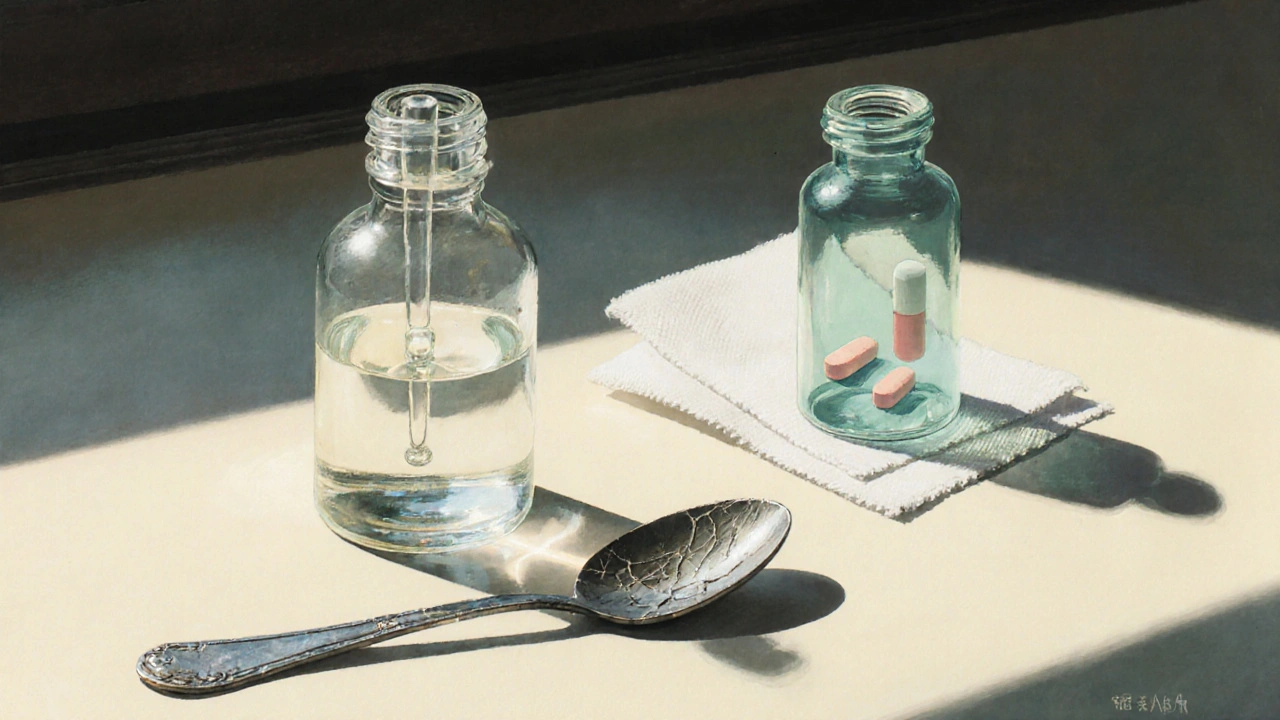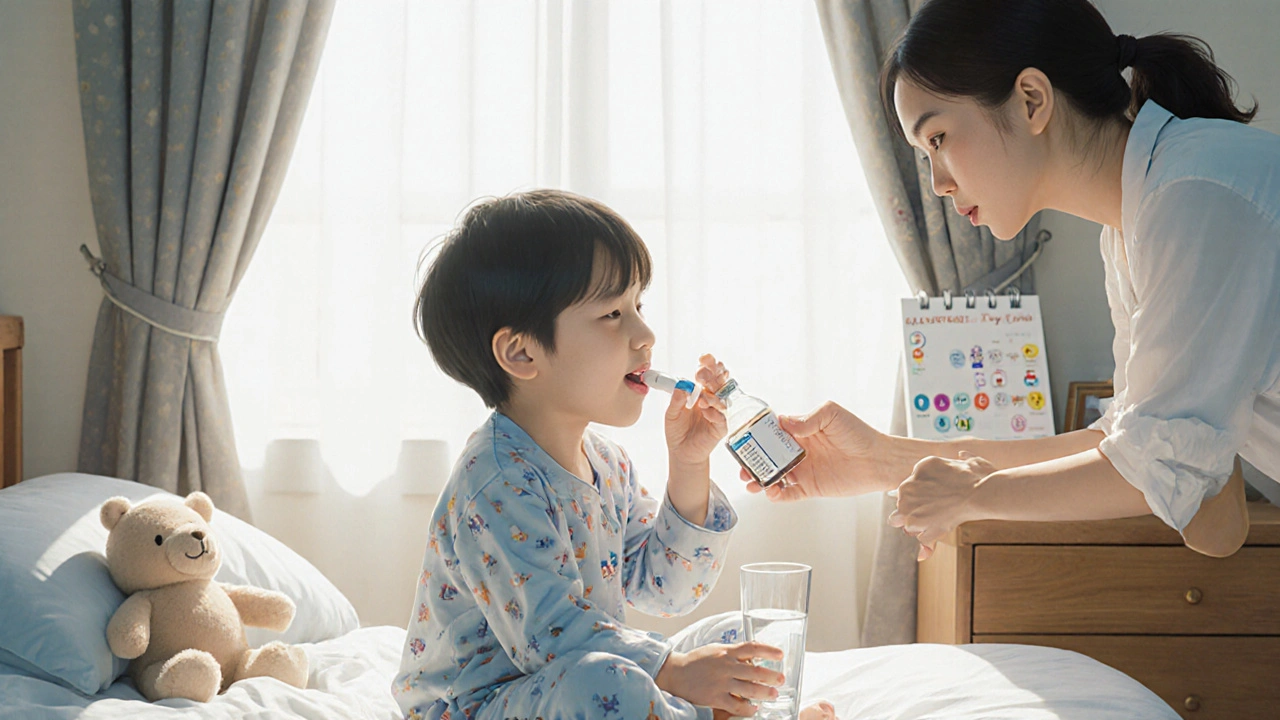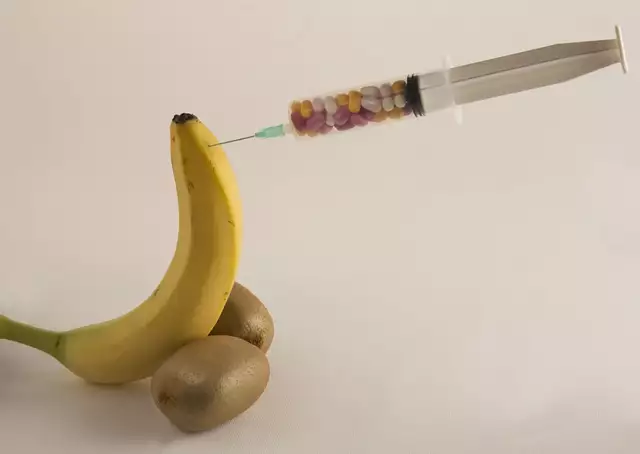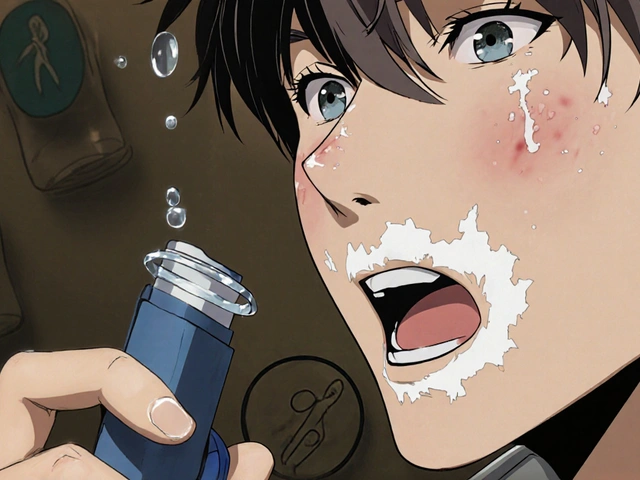When your child is sick, the last thing you want is a battle over medicine. You’ve got the prescription in hand, but now you’re staring at two options: a sweet-tasting liquid or a tiny pill. Which one actually works better? For years, doctors and parents defaulted to liquid - it seemed safer, easier, and more precise. But the truth has changed. Today, tablet medications are not just an option - they’re often the smarter choice for kids, even as young as 2 or 3.
Why Liquids Are Still Common - and Why That’s Changing
Liquid medications have been the go-to for decades. They’re easy to measure, you can adjust the dose by weight, and they taste like candy (or at least they’re supposed to). But here’s the problem: most liquid kids’ meds don’t taste like real strawberry, grape, or bubblegum. They taste like chemicals with a sugar coating. A 2007 study found that 68% of children refuse or gag on liquid meds because of the artificial flavor. Parents report spills, wasted doses, and tantrums that last longer than the illness itself.
And it’s not just about taste. Liquid medicines often need refrigeration. Once opened, many expire in just 14 to 30 days. If you forget to chill them or leave them in the car, they can break down. That means you’re either throwing out half a bottle or risking your child gets a weaker dose. The FDA found that 12-18% of liquid doses are mismeasured - usually because parents use kitchen spoons or eyeball it. One teaspoon isn’t always a teaspoon. That’s dangerous with meds like antibiotics or seizure drugs.
Tablets Aren’t Just for Big Kids Anymore
Think your 3-year-old can’t swallow a pill? Think again. Modern pediatric tablets aren’t the big, hard capsules adults take. They’re mini-tablets - as small as 2mm wide, about the size of a sesame seed. These are designed to be swallowed whole, not crushed. Studies show kids as young as 6 months can swallow them with no trouble. One 2012 trial with 60 children found that mini-tablets were actually more accepted than liquids in babies under 1 year. Why? Because they don’t have that weird chemical aftertaste.
There are also orodispersible tablets that melt on the tongue in 30 seconds - no water needed. And film-coated versions hide bitter flavors so well, kids don’t even know they’re taking medicine. In a 2023 survey of parents on Reddit, 78% said their kids preferred swallowing a mini-tablet over the liquid version, even when the liquid was labeled “strawberry.” One parent wrote: “My 4-year-old would rather swallow a pill than take the ‘strawberry’ antibiotic that tasted like chemicals.”
Accuracy, Stability, and Cost - The Hidden Advantages of Tablets
Tablets win on precision. Each tablet has a fixed dose. No measuring. No syringes. No guesswork. That’s huge for meds like antibiotics, where giving too little can lead to resistance, and too much can cause side effects. Liquids? You’re relying on a parent’s shaky hand and a poorly marked syringe. The FDA says up to 20% of liquid doses are wrong.
Stability is another win. Tablets last 2 to 3 years at room temperature. Liquids? Often 14 days max after opening. That means less waste, fewer trips to the pharmacy, and lower costs. A 2021 NHS analysis found switching from liquid to tablet for just 10,000 pediatric prescriptions saves £7,842. For a hospital, that’s tens of thousands a year. Generic tablets are also 25-40% cheaper per dose than liquid versions.
And yes, tablets are easier to carry. No cold packs. No leaking bottles. No bulky containers in your diaper bag. If you’re traveling, going to daycare, or just running errands, a small pill bottle beats a 4-ounce liquid bottle any day.

When Liquids Are Still the Better Choice
That doesn’t mean tablets are always better. For babies under 6 months, liquids are still the standard. Their swallowing reflex isn’t fully developed, and dosing must be exact - often based on weight in kilograms. For medications like levothyroxine (for thyroid) or warfarin (a blood thinner), where even a 0.1mL difference matters, liquids allow for precise titration. You can give 1.3mL or 2.7mL - you can’t split a tablet that finely without risking overdose or underdose.
Also, if your child has a condition that affects swallowing - like cerebral palsy or severe reflux - liquids may be safer. And if your child is vomiting or can’t keep anything down, liquids can sometimes be absorbed faster. But these are exceptions, not the rule.
How to Teach Your Child to Swallow a Pill
The biggest reason parents stick with liquids? Fear. Fear of choking. Fear of failure. But choking on a properly sized pediatric tablet is extremely rare - less than 0.002% of cases, according to FDA data from 2010-2020. The real issue is lack of practice.
Start around age 3. Use practice tools: mini-marshmallows, tiny bread balls, or even sugar-free sprinkles. Let your child practice swallowing them with water. Make it a game. Once they can swallow three in a row, move to real mini-tablets. Use the “pop-bottle method”: place the tablet on the tongue, take a sip from a plastic water bottle, and swallow while sucking. It creates a natural swallowing motion that works better than just tipping the head back.
According to the American Academy of Pediatrics, 90% of kids aged 3 and up can learn to swallow tablets with proper coaching. And when parents are shown how to do it, acceptance rates jump 65%. You’re not failing your child if they can’t do it on day one. You’re just getting started.

What the Experts Say
The European Medicines Agency has been pushing this shift since 2013. Their official guidance says: “Children with long-term illnesses should be trained to swallow tablets from age 3-5.” Dr. Jane Standing, a top pediatric pharmacist in London, says, “The automatic preference for liquid is not evidence-based - it’s habit.”
The World Health Organization now recommends solid forms over liquids for most medications in developing countries, where refrigeration and storage are unreliable. And the FDA’s 2023 draft guidelines explicitly encourage drugmakers to develop age-appropriate tablets instead of defaulting to liquids.
Still, a 2021 survey of 500 U.S. pediatricians found that 62% still prescribe liquids for kids under 8 - mostly because parents ask for them. But that’s changing. Between 2015 and 2022, the number of approved pediatric tablet formulations jumped 220%. The market is catching up. The real barrier isn’t science - it’s old habits.
What to Do Next
Next time your child needs medicine, ask: “Is there a tablet form available?” Don’t assume liquid is the only option. Check the prescription label. Ask the pharmacist. Many drugs come in both forms - and the tablet version is often cheaper and more stable.
If your child is over 2 years old and healthy, consider training them to swallow tablets. Start small. Be patient. Celebrate progress. And if the liquid tastes awful? That’s not normal. Ask for a different flavor - or switch to a tablet. You’re not being lazy or stubborn. You’re choosing a safer, more reliable option.
Medicine isn’t just about what’s in the bottle. It’s about what happens after. Does your child take it? Do they keep taking it? Do you waste half of it? Tablets answer those questions better than liquids - for most kids, most of the time.
Can a 2-year-old swallow a tablet?
Yes - but only if it’s a properly sized pediatric mini-tablet (2-4mm). Many children as young as 2 can swallow these with practice. Start with soft, dissolvable forms or use the pop-bottle method. Never crush tablets unless instructed by a doctor.
Are liquid medications less accurate than tablets?
Yes. Studies show 12-20% of liquid doses are incorrectly measured, often because parents use kitchen spoons or guess the amount. Tablets have a fixed dose, so there’s no room for error - as long as you give the right number of tablets.
Why do some pediatricians still prescribe liquids?
Many do it out of habit or because parents expect it. A 2021 survey found 62% of U.S. pediatricians still default to liquids for kids under 8, even though guidelines recommend tablets. It’s not always about medical need - it’s about what’s familiar.
Do tablets taste better than liquids?
Often, yes. Modern tablets use advanced coatings that hide bitter flavors. Many kids report that a tablet tastes neutral or even pleasant, while liquid versions - even those labeled “strawberry” - often taste artificial and unpleasant. Taste matters more than you think.
Can I crush a tablet and mix it with food?
Only if the doctor or pharmacist says it’s safe. Many tablets are time-released or enteric-coated - crushing them changes how the drug works. This can make the medicine ineffective or even dangerous. Always check before crushing.
Is it cheaper to use tablets instead of liquids?
Yes. Tablets cost 25-40% less per dose on average. They also last longer, so you waste less. A 2021 UK study found switching 10,000 pediatric prescriptions from liquid to tablet saved £7,842. That’s money saved for families and hospitals.





Alex Harrison
November 7, 2025 AT 21:40I never thought about how bad liquid meds taste until my kid gagged on that 'strawberry' amoxicillin. It literally smelled like a chemistry lab. Switched to mini-tablets and now he takes them like candy. No more tears, no more mess. Game changer.
Jay Wallace
November 8, 2025 AT 22:24Of course tablets are better-because America makes better medicine. Why are we still clinging to European-style liquid nonsense? The FDA’s data is clear, and so is the science. If you can’t get your kid to swallow a pill, maybe you’re the problem-not the medicine.
Alyssa Fisher
November 9, 2025 AT 19:59It’s fascinating how much of this comes down to habit rather than evidence. We’ve conditioned ourselves to believe liquids are safer because they’re more familiar, but the data shows the opposite. The real question isn’t whether kids can swallow tablets-it’s why we’re so resistant to changing our behavior when the evidence is right in front of us.
Alyssa Salazar
November 10, 2025 AT 17:10Let’s be real-the pharmaceutical industry’s push for solid dosage forms isn’t altruistic. It’s about shelf life, cost efficiency, and reducing liability from dosing errors. But hey, if the outcome is fewer tantrums and less wasted medication, I’m all for it. The science is solid, the logistics are cleaner, and the compliance rates? Skyrocketing. This isn’t just a trend-it’s a paradigm shift.
Beth Banham
November 12, 2025 AT 08:12I tried the mini-tablet route with my 3-year-old. Took two weeks of practice with sprinkles and marshmallows. Now she asks for her medicine like it’s a treat. No pressure, no drama. Just quiet wins.
Brierly Davis
November 14, 2025 AT 06:12My daughter hated liquids too-until we tried the pop-bottle trick. Seriously, it works like magic. No head-tilting, no choking fears. Just a sip and swallow. I wish someone had told me this years ago. You’re not failing your kid-you’re just using the wrong tool. Try it. You’ll thank yourself later.
Jim Oliver
November 14, 2025 AT 23:41Typical. You people treat kids like fragile glass dolls. If they can’t swallow a pill, they shouldn’t be alive. The FDA says 90% of 3-year-olds can do it. You’re just lazy. And yes, I’ve crushed tablets before. So what? My kid didn’t die.
William Priest
November 16, 2025 AT 10:00Let’s not pretend this is new. Tablets have been the gold standard since the 80s in Europe. We’re just catching up because Americans are addicted to convenience. And don’t even get me started on those ‘strawberry’ syrups-those are just sugar water with a side of placebo. Real medicine doesn’t need candy coating.
Ryan Masuga
November 18, 2025 AT 07:04My son was 2 when we started practicing with sprinkles. Took him a month, but now he’s a pro. I didn’t force him-I made it a game. High fives for every pill. Now he even helps his little sister take hers. It’s not about age-it’s about patience. You’ve got this.